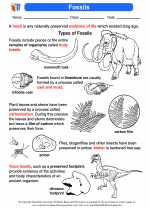Flagella
Flagella are whip-like appendages found in some cells that are used for movement. They are primarily found in single-celled organisms such as bacteria, as well as in some eukaryotic cells such as sperm cells.
Structure of Flagella
Flagella are made up of a protein called flagellin, which forms a long, helical structure. The flagellum extends from the cell and is anchored to the cell membrane and cell wall in bacteria, or to the cell membrane in eukaryotic cells.
Function of Flagella
Flagella enable cells to move through their environment. In bacteria, the rotation of the flagellum propels the cell forward, allowing it to swim towards nutrients or away from harmful substances. In eukaryotic cells, such as sperm cells, flagella enable the cell to swim towards the egg for fertilization.
Study Guide
- What is the primary function of flagella?
- Describe the structure of flagella.
- Where are flagella primarily found in cells?
- How do flagella enable cells to move?
- Give an example of a cell that uses flagella for movement.
By understanding the structure and function of flagella, you can appreciate the importance of these cellular appendages in the movement of various organisms.
.◂Science Worksheets and Study Guides Eighth Grade. Fossils

 Activity Lesson
Activity Lesson
 Worksheet/Answer key
Worksheet/Answer key
 Worksheet/Answer key
Worksheet/Answer key
 Worksheet/Answer key
Worksheet/Answer key
 Worksheet/Answer key
Worksheet/Answer key
 Vocabulary/Answer key
Vocabulary/Answer key
 Vocabulary/Answer key
Vocabulary/Answer key
